
Image uses photo from Pixabay.
Uber famously quit China in 2016, after selling its business unit there to incumbent Didi. Yesterday, it exited Russia after a deal with local ride-hailer Yandex.
As the company stares down controversies and competition at home and abroad, investors are reportedly making the case for Uber to cut deals with other local competitors, including in Southeast Asia.
Here, Grab and Go-Jek have diversified, moving from ride-hailing into payments and commerce, in an effort to capture more high-frequency transactions and revenue.
Uber hasn’t gone down that route. Additional services like UberEats food delivery have not been widely introduced in the region. While Grab and Go-Jek gained traction in their respective markets, Uber has trailed behind by most measures. It did make up ground in 2016, but the gap could now be widening again.
A swift Uber exit from Southeast Asia isn’t likely – Andrew Macdonald, the ride-hailing firm’s general manager for Latin America and Asia-Pacific just yesterday informed Tech in Asia about plans to enter a new country in the region, Cambodia. It just launched in Myanmar in May.
In the long run, it’s a possibility.
Here’s a look at Uber’s traction in Southeast Asia, compared to its local rivals.
Top ride-hailing app by MAU
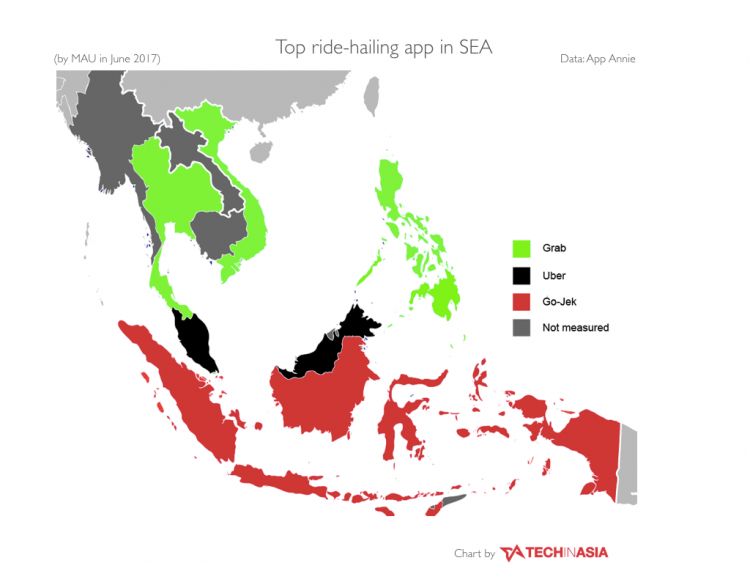
In a snapshot of monthly active users (MAU) in June, Grab takes the lead in most parts of Southeast Asia, except in the region’s biggest nation, Indonesia. Curiously, Uber leads in Malaysia – Grab’s country of birth – according to new data from app measurement company App Annie.
Myanmar, Cambodia, Laos, and East Timor were not considered, as Uber is not available there or has just recently launched there.
Grab leads Uber in app downloads
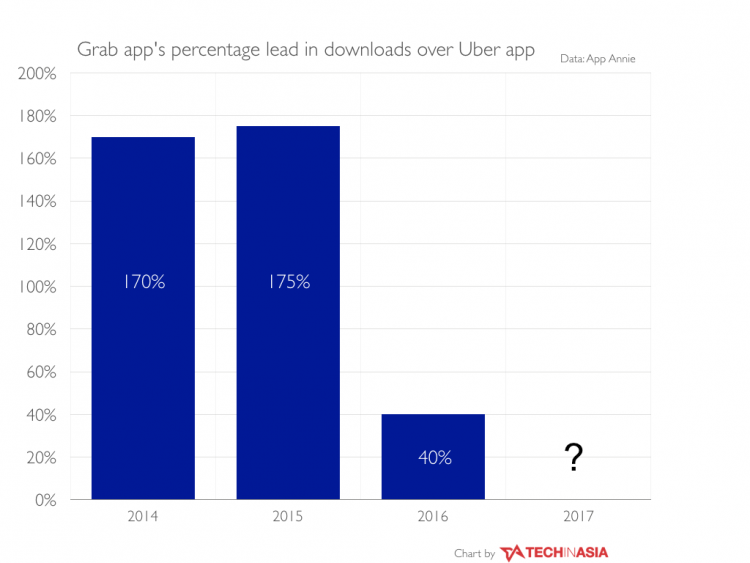
In 2016, Uber had a strong year in Indonesia, Malaysia, Singapore, Vietnam, Thailand, and the Philippines. It was catching up in terms of downloads.
Grab saw the most download activity overall that year, but its app was only downloaded 40 percent more frequently than Uber’s. In 2015, Grab had a 175 percent lead, and 170 percent in 2014, according to App Annie data.
App rank
It’s not clear if Uber will continue to close that gap in 2017 or if the trend is reversing.
App Annie did not provide us with download data for the first half of 2017, but here’s an approximation: We looked at Uber’s app rank since 2015 in relation to Grab and Indonesian rival Go-Jek. The rank data, which is public, was compiled on July 9. It looks at rank in the overall app category.
Apple’s App Store and Android’s Play Store rank don’t just count downloads, they’re believed to factor in things like uninstalls, ratings, and usage.
In most countries we gathered data for, Uber’s app rank quickly caught up with Grab and Go-Jek throughout 2016 – in line with what App Annie’s pure download data says. But then its rank declined in most countries, with a few exceptions.
This could be an indicator that Uber’s app download frequency is losing ground again after catching up in 2016, but we can’t say for sure. We’ve asked App Annie to provide the missing data.
Play Store
Indonesia
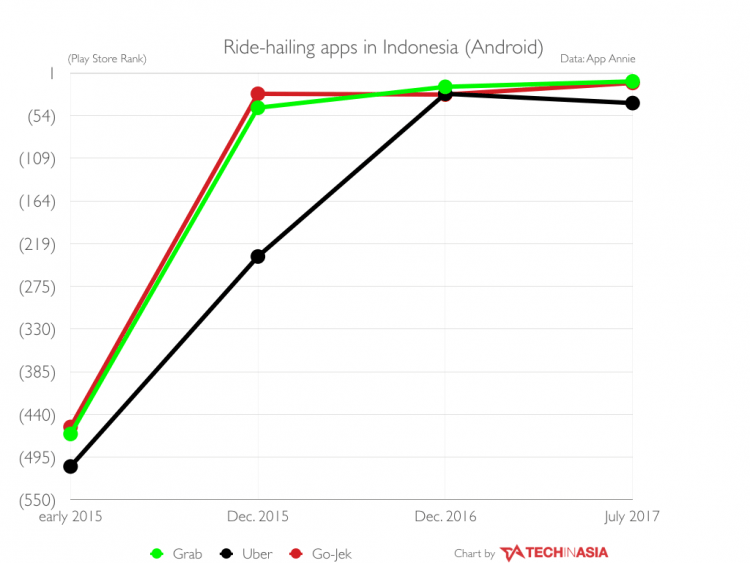
Malaysia
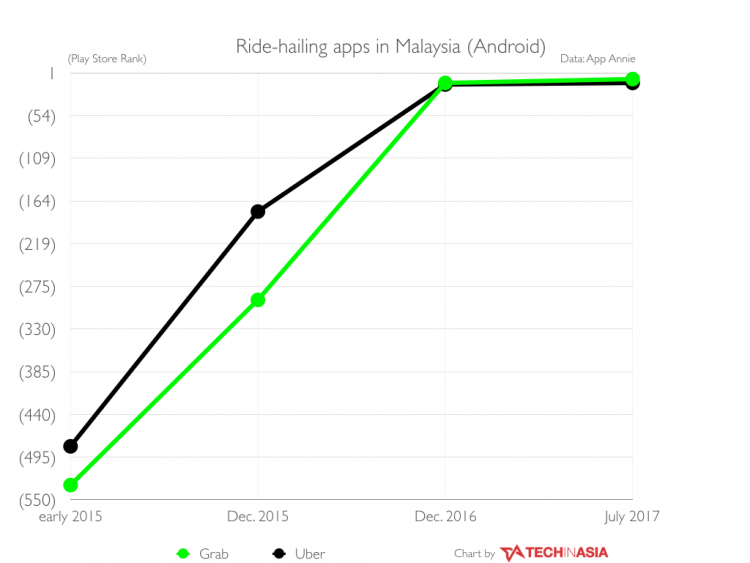
Philippines
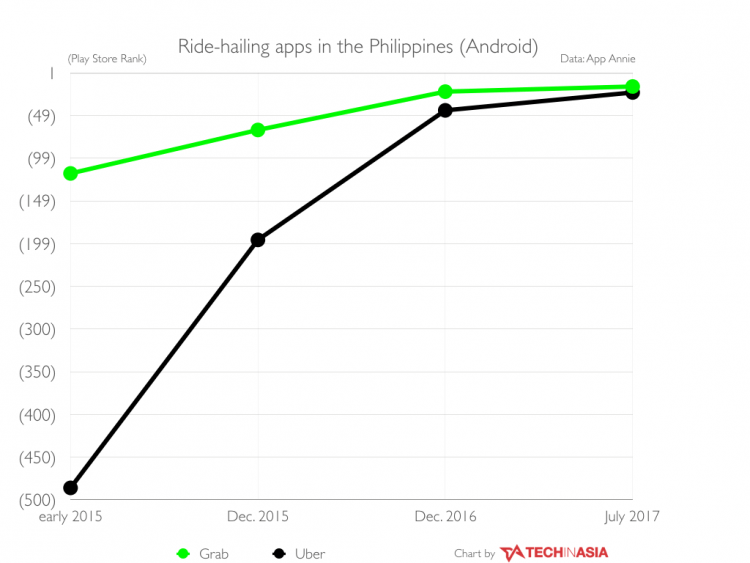
Singapore
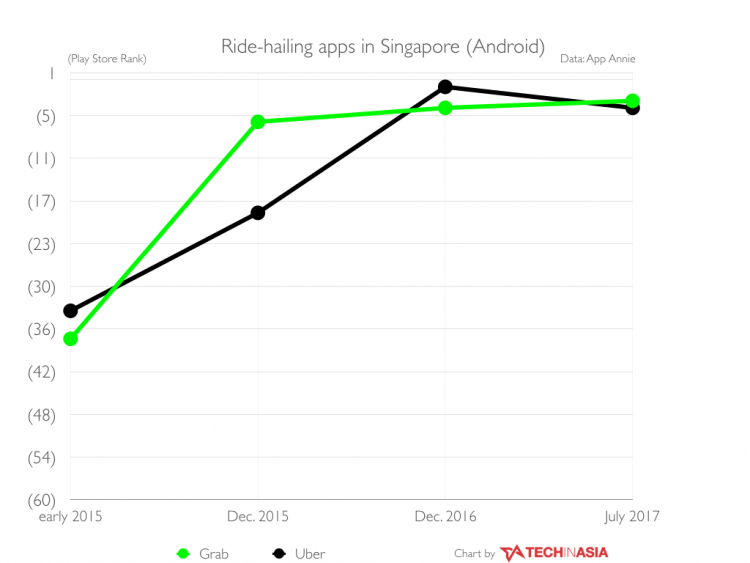
Thailand

Vietnam
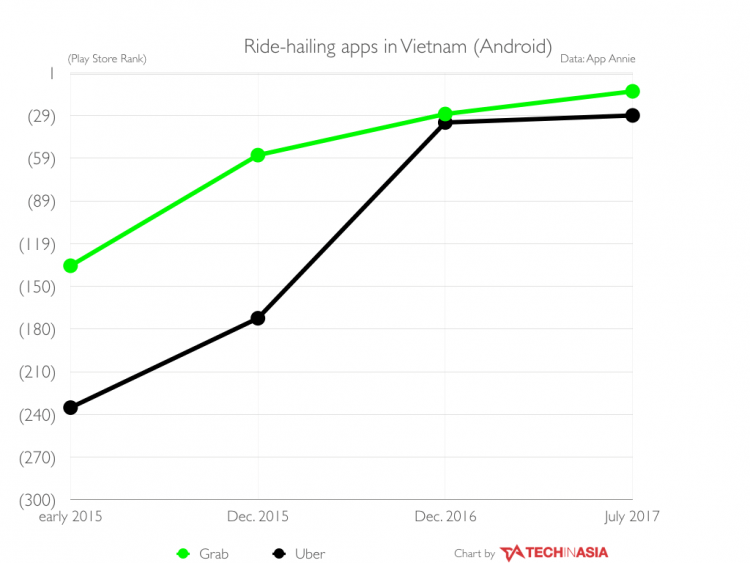
App Store
Indonesia
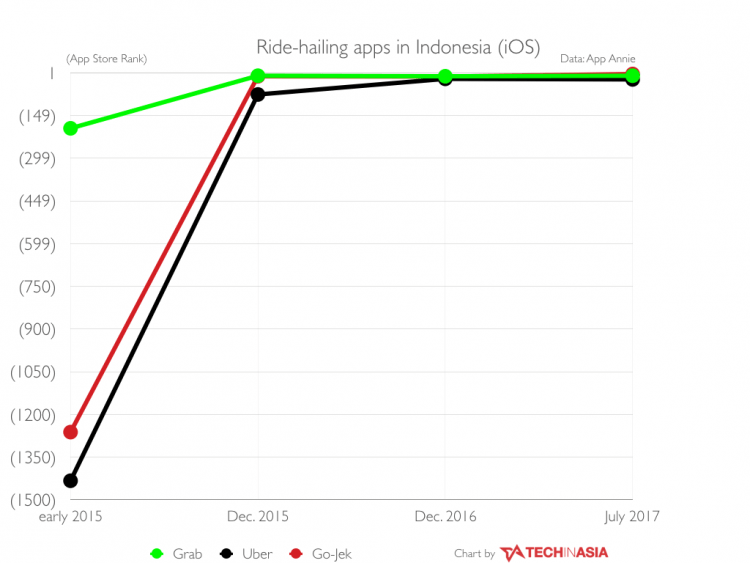
Malaysia
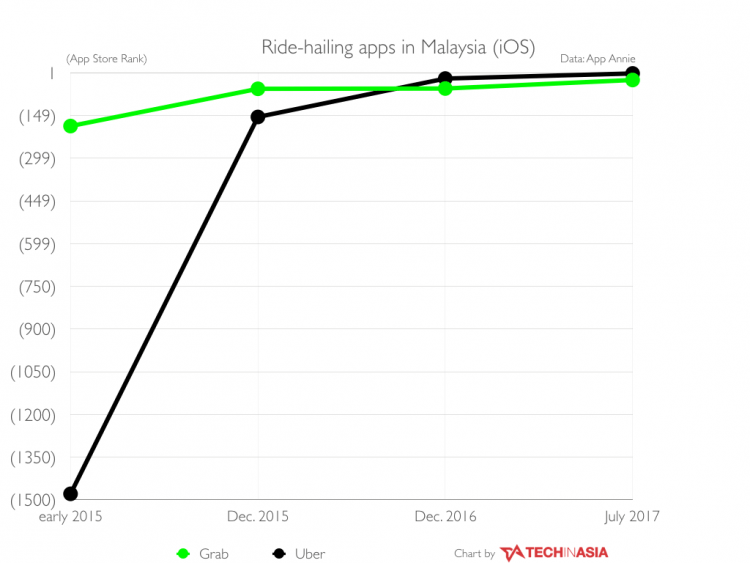
Philippines
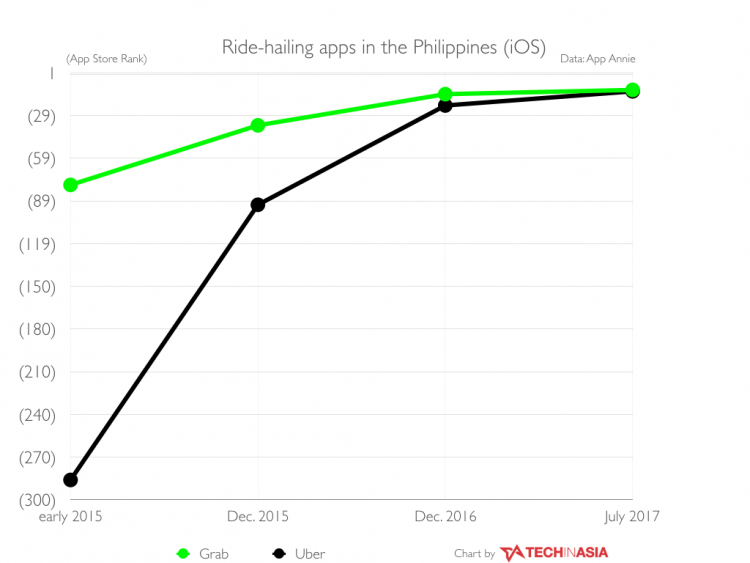
Singapore

Thailand
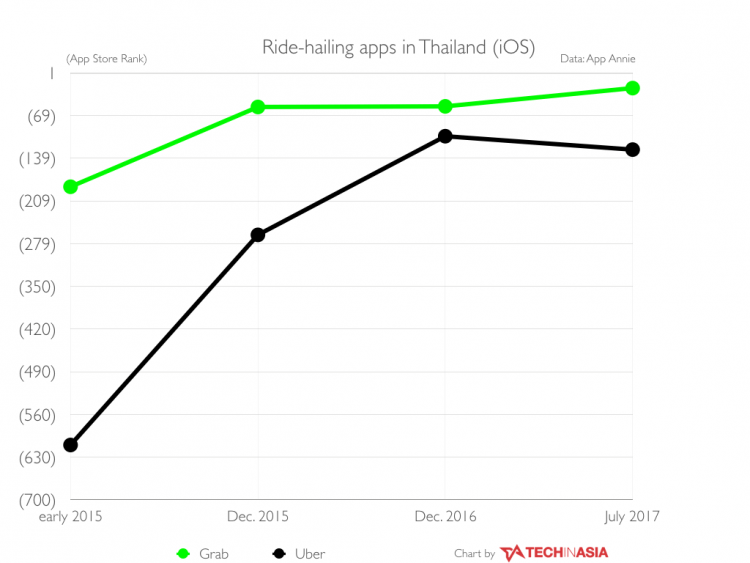
Vietnam
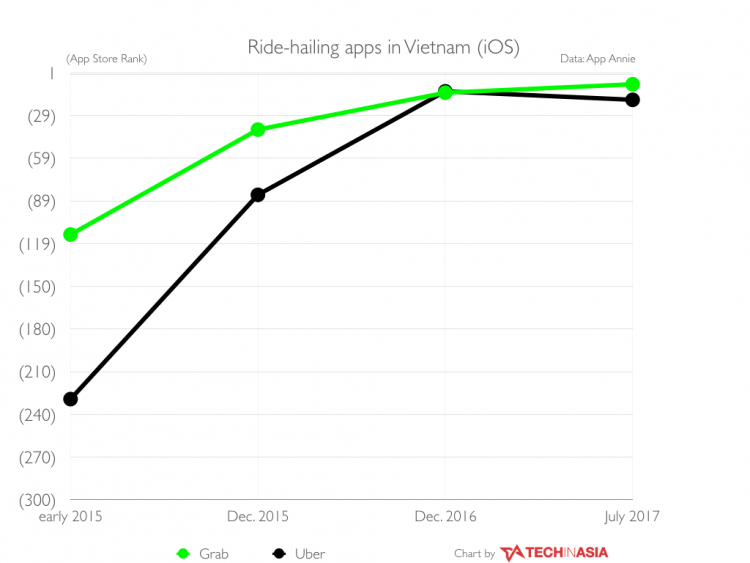
This post Uber was catching up with rivals in Southeast Asia. Now the gap could be widening appeared first on Tech in Asia.
from Tech in Asia https://www.techinasia.com/uber-vs-grab-vs-go-jek
via IFTTT
No comments:
Post a Comment